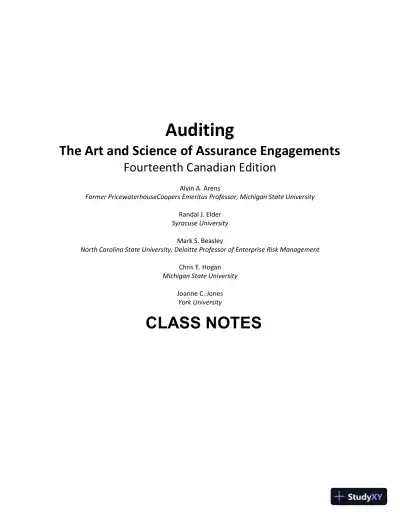Page 1

Loading page ...
Auditing: The Art And Science Of Assurance Engagements, Fourteenth Canadian Edition Class Notes provides helpful chapter hints to guide your studying and ensure you focus on the most important concepts.

Loading page ...
This document has 196 pages. Sign in to access the full document!